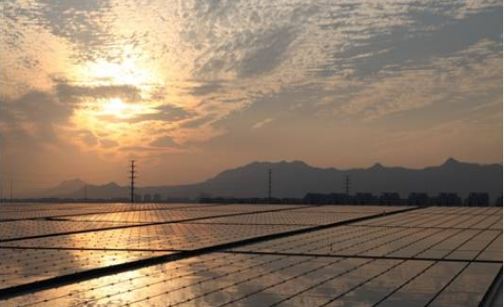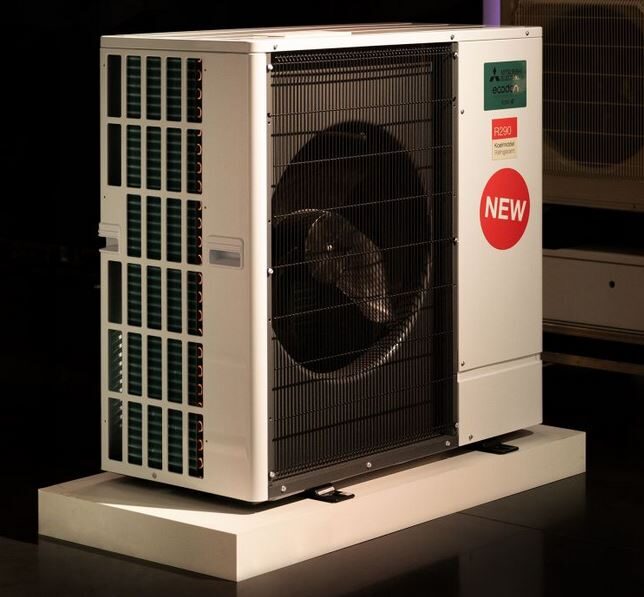There is no denying Beijing-based thin-film manufacturer Hanergy has delivered a blockbusting set of first-half results.
Revenue from contracts with customers at HK$20.4 billion (US$2.59bn), compared with HK$2.8bn this time last year; gross profit up from HK$1bn to HK$12bn; profit before tax up from HK$247 million to a whopping HK$10bn; net profits up from HK$244m to HK$7.3bn; and “total comprehensive income” up from HK$452m to HK$7.6bn; to raise the earnings per share figure from HK$0.058 to HK$0.17.
Take a look at those figures folks – Hanergy is back!
The impressive financial update published on Thursday explains the company's strategic decision to focus on its upstream business of supplying high-end thin-film production lines to industrial parks around China – together with the fact its downstream offering is branching out into a diverse array of mobile applications, from clothing to transport – effectively insulates the manufacturer from the policy bombshell dropped by the authorities just down the road in its home city on May 31.
Whilst peers are reeling from Beijing's decision to halt subsidized solar parks in the world's biggest PV market – killing demand for the solar ingots, wafers, cells and panels being pumped out of Chinese factories in ever increasing volumes – Hanergy is providing big-earning thin-film production lines to industrial parks springing up around the country under local government commitments, and diversifying into areas like adventure sports and even the “Humbrella” solar parasol.
Shares still suspended
However, eager investors queueing up to buy into the Hanergy renaissance will be unable to do so because the group's shares are still barred from trading on the Hong Kong exchange, courtesy of the 47%, one-day crash in Hanergy's stock value that occurred on May 20, 2015, when investigators unearthed the extent to which the group's previous booming figures were reliant on internal trading between the sprawling company's complex web of associated businesses.
You will have to scroll down as far as page 60 of the 62-page first-half figures for an update on the company's attempt to get its stock back on the market.
Phase two of that process saw Hanergy publish a disclosure document outlining the company's “activities, businesses, assets, liabilities, financial performance and prospects”. The report adds: “The company is currently responding and addressing to the issues and concerns raised by the SFC [Hong Kong Securities and Futures Commission] in respect to the disclosure document.”
Should those “issues and concerns” be satisfactorily addressed, the document will pass to the Hong Kong exchange's board of directors for consideration to resume trading in the company's stock. If that process goes past July 31 next year, however, Hanergy will be removed from the exchange.
The level of scrutiny is understandable for a company caught inflating its achievements by shuffling around contracts and earnings among its own entities, and it seems unlikely any business would repeat the same mistakes after such drastic, public punishment. All of which makes it regrettable Hanergy has not responded to pv magazine‘s requests for more information about the customers behind the latest figures.
The industrial park strategy
The figures show Hanergy's strategy of supplying thin-film production equipment to industrial park projects across its homeland – and to other third-party customers – supplied the largest current asset in its accounts, with HK$21.8bn owing from such contracts. Less contract expenses, that rounds out at a HK$12.7bn contribution to the first-half figures, compared with just HK$2.4m a year ago.
It is a lucrative move, with case studies such as the Sichuan Mianyang Industrial Park Project bringing production line sales contracts worth HK$2.73bn and the Shanxi Datong project raking in HK$1.82bn. But there is an upfront cost. Hanergy's business model is to take a minority stake of up to 20% in each of the local authority-driven business parks. That, for instance, takes a HK$454.4m chunk out of the company's earnings in Datong. However the hit may not be directly to Hanergy as, for instance, the minority stake held at Sichuan Mianyang is by unspecified “Hanergy affiliates”.
Furthermore, it was a strategy started before the 2015 share price crash. The figures also quote the example of the Shandong Zibo Industrial Park Project, in which separate company Hanergy Holdings held a 57% stake – the latest update doesn't give a total investment figure so it's impossible to determine how much the stake cost – which it transferred to Huafengyuan Investment (Beijing) Co. Ltd. last October. Hanergy's latest figures reveal only that the Shandong project has delivered contracts worth US$780m (HK$6.12bn) and contract revenues of HK$1.677bn.
What is clear from the figures is Hanergy's worrying dependence on its domestic market, with HK$20.4bn of its revenue in the first half coming from the People's Republic, compared to HK$29m from the U.S., HK$12.9m from “others” and a paltry HK$440,000 from the U.K.
Hanergy still can't deliver panels to itself
But with investors still aware of the corporate governance issues which made Hanergy a household name for all the wrong reasons, it is perhaps the “Prepayments and deposits” section of the update, detailing the past internal trading shenanigans, which is likely to give most pause for thought.
In the usually dry world of corporate reporting, ppg 24-26 provide a rare moment of comic relief as Hanergy and its oft mentioned “Hanergy Affiliates” and “Hanergy Holding” indulge in a tat for tat, to me, to you story of repeated missed deliveries which, nevertheless have failed to frustrate repeat orders from Hanergy since 2012. Only 58.5 MW of a 677.9 MW module order were delivered by the end of 2013, only 28.8 MW of a 55.8 MW follow-up order materialized the following year. In 2015 Hanergy was still waiting on a further 362.8 MW of missing modules, the following year 228 MW never showed up.
“During 2017, the company did not sign any new purchase contracts with Hanergy Affiliates,” states the update, with no hint of intended humor. This year, it is announced, if Hanergy affiliates can't deliver the outstanding modules, their value will be written off against prepayments due from Hanergy to said affiliates. Sound familiar?
And then there is the final pay-off: As at 30 June, Hanergy is still waiting on delivery of 123.7 MW of panels…
This content is protected by copyright and may not be reused. If you want to cooperate with us and would like to reuse some of our content, please contact: editors@pv-magazine.com.




By submitting this form you agree to pv magazine using your data for the purposes of publishing your comment.
Your personal data will only be disclosed or otherwise transmitted to third parties for the purposes of spam filtering or if this is necessary for technical maintenance of the website. Any other transfer to third parties will not take place unless this is justified on the basis of applicable data protection regulations or if pv magazine is legally obliged to do so.
You may revoke this consent at any time with effect for the future, in which case your personal data will be deleted immediately. Otherwise, your data will be deleted if pv magazine has processed your request or the purpose of data storage is fulfilled.
Further information on data privacy can be found in our Data Protection Policy.